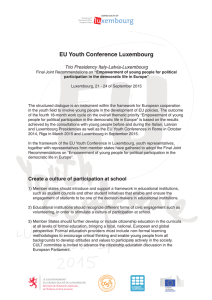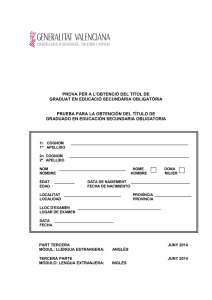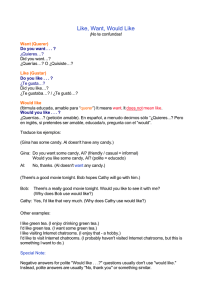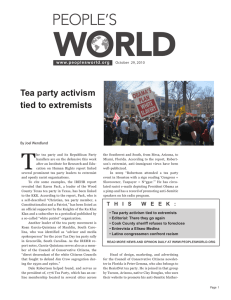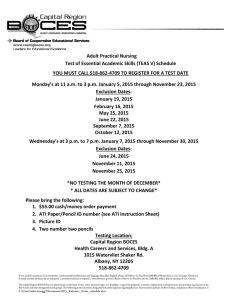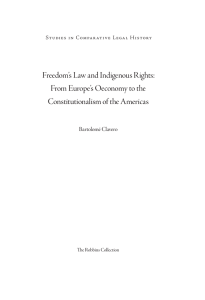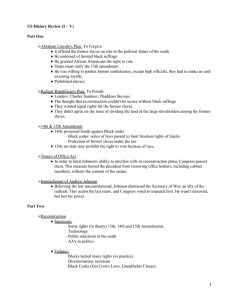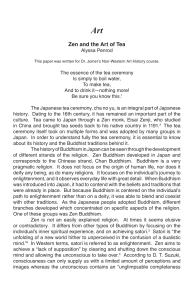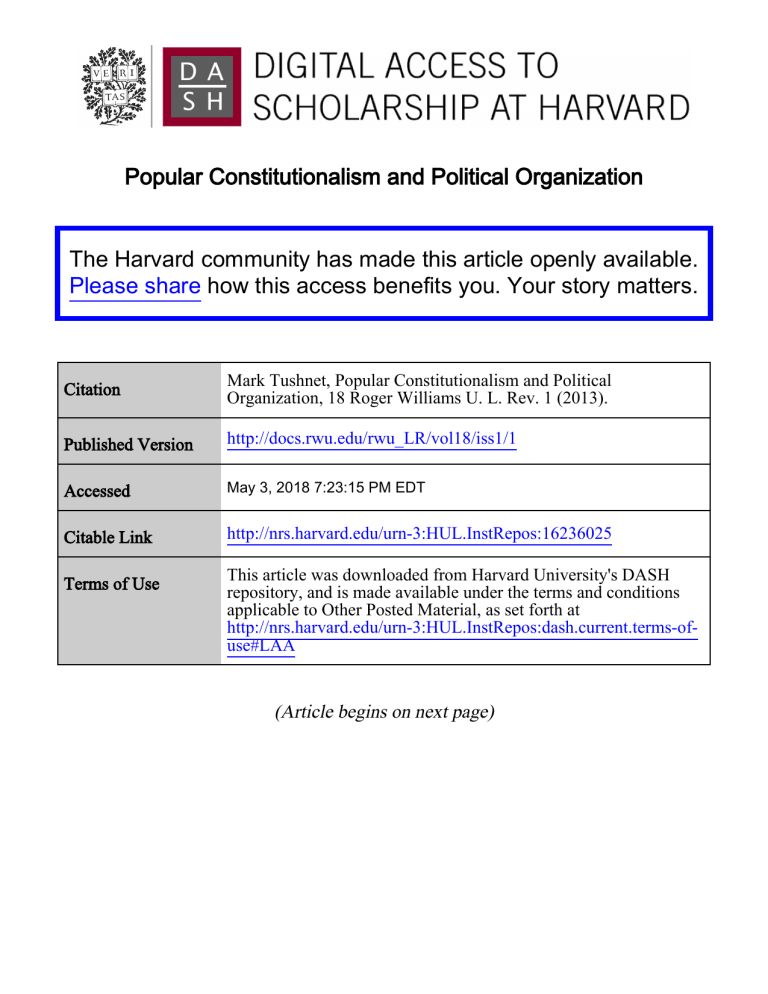
Popular Constitutionalism and Political Organization The Harvard community has made this article openly available. Please share how this access benefits you. Your story matters. Citation Mark Tushnet, Popular Constitutionalism and Political Organization, 18 Roger Williams U. L. Rev. 1 (2013). Published Version http://docs.rwu.edu/rwu_LR/vol18/iss1/1 Accessed May 3, 2018 7:23:15 PM EDT Citable Link http://nrs.harvard.edu/urn-3:HUL.InstRepos:16236025 Terms of Use This article was downloaded from Harvard University's DASH repository, and is made available under the terms and conditions applicable to Other Posted Material, as set forth at http://nrs.harvard.edu/urn-3:HUL.InstRepos:dash.current.terms-ofuse#LAA (Article begins on next page) Roger Williams University Law Review Volume 18 Issue 1 Vol. 18: No. 1 (Spring 2013) Article 1 Spring 2013 Popular Constitutionalism and Political Organization Mark Tushnet Harvard Law School Follow this and additional works at: http://docs.rwu.edu/rwu_LR Recommended Citation Tushnet, Mark (2013) "Popular Constitutionalism and Political Organization," Roger Williams University Law Review: Vol. 18: Iss. 1, Article 1. Available at: http://docs.rwu.edu/rwu_LR/vol18/iss1/1 This Article is brought to you for free and open access by the Journals at DOCS@RWU. It has been accepted for inclusion in Roger Williams University Law Review by an authorized administrator of DOCS@RWU. For more information, please contact [email protected]. TUSHNET DESKTOPPED.DOCX (DO NOT DELETE) 3/29/2013 10:21 AM Popular Constitutionalism and Political Organization Mark Tushnet* INTRODUCTION Recent scholarship on popular constitutionalism has two strands. A normative strand urges that the views of ordinary people about constitutional meaning should play at least as large a role in constructing the nation’s constitutional understandings as do the views of elites, and especially the views of Supreme Court justices. A descriptive strand emphasizes the fact that popular views on the Constitution’s meaning have played a large role in the nation’s constitutional development – surging to the forefront at times, receding later, but always present in some form. This brief Essay contributes to the descriptive strand, and specifically to discussions of how popular views are articulated within the framework of political institutions understood broadly to include social movements and political parties. Without purporting to have done a systematic survey, I have the sense that – perhaps influenced by the modern availability of public opinion polls – critics of popular constitutionalism believe that popular views can somehow be read off “the people’s” expressions, whether in demonstrations, in letters to the editor, or similar alternatives. I believe that criticism misunderstands how politics, even popular politics, works, which is in and through institutions. Consider popular demonstrations, incorporated into Larry Kramer’s analysis as, in the eighteenth century phrase, “the people out-of- 1 TUSHNET DESKTOPPED.DOCX (DO NOT DELETE) 2 3/29/2013 10:21 AM ROGER WILLIAMS UNIVERSITY LAW REVIEW [Vol. 18:1 doors.” 1 Scholars have shown how popular demonstrations are organized events. So, for example, Jacksonian era riots against abolitionists were organized, as the title of an important study puts it, by “gentlemen of property and standing.” 2 As that phrase suggests, elite involvement in popular expressions is not unknown. The original Boston Tea Party was similarly elite led.3 Yet, there are examples of truly bottom up organization of popular expression about constitutional matters. A notable example are the free speech fights of the Industrial Workers of the World in the early twentieth century, labor insurgencies of ordinary working people, though with local leaders drawn from the IWW.4 Wherever the leadership comes from, though, popular expression on constitutional matters involves organization – be it the organization of mobs or unions or anything else. This Essay deals with the two primary forms of organization – organization within the political system, whether as a faction within an existing party or as a “third” party, and organization outside the party system in social movements or in what we now tend to call “civil society.” EXTRA-PARTY ORGANIZATION Probably the prime examples of extra-party organizations in U.S. history in support of popular constitutionalism are the civil rights movement of the 1960s, and perhaps the early stages of the gay rights movement. They operated outside the framework of the party system. So, for example, the organizers of Mississippi Freedom Summer self-consciously refrained from affiliating with * William Nelson Cromwell Professor of Law, Harvard Law School. This essay was presented at the Whose Constitution? Popular Constitutionalismand the 2012 Election held at the Roger Williams University School of Law on February 24, 2012. 1. LARRY D. KRAMER, THE PEOPLE THEMSELVES: POPULAR CONSTITUTIONALISM AND JUDICIAL REVIEW 35, 47, 133, 169 (Oxford Univ. Press 2004) (1958). 2. LEONARD L. RICHARDS, “GENTLEMEN OF PROPERTY AND STANDING”: ANTI-ABOLITION MOBS IN JACKSONIAN AMERICA 131-134 (1970). 3. See BENJAMIN L. CARP, DEFIANCE OF THE PATRIOTS: THE BOSTON TEA PARTY & THE MAKING OF AMERICA 36-37 (2010). 4. See David M. Rabban, The IWW Free Speech Fights and Popular Conceptions of Free Expression Before World War I, 80 VA. L. REV. 1055, 105676 (1994). TUSHNET DESKTOPPED.DOCX (DO NOT DELETE) 2013] POPULAR CONSTITUTIONALISM 3/29/2013 10:21 AM 3 the Democratic Party, 5 even as they promoted a voter education and registration effort whose main beneficiary, if any, would be that Party. 6 They did organize a Freedom Democratic Party, which sent a delegation to the Democratic National Convention in 1968 to challenge the official Mississippi Party’s delegation.7 The effort, though, was more political theater than a serious effort to move the civil rights movement into the Democratic Party. And, indeed, a consistent theme in much movement rhetoric, particularly by the more active and less moderate groups, was the failure of the Democratic Party’s national leadership to do enough to support civil rights. That theme was illustrated, along with the extra-party features of the civil rights movement, by the conflict between the organizers of the 1963 March on Washington and John Lewis, then of the Student Nonviolent Coordinating Committee over the content of Lewis’s proposed speech. The organizers forced him to tone the speech down, out of concern that its criticisms of John F. Kennedy’s civil rights policies would harm the movement. 8 These examples show, of course, that the distinction between extra-party organization and organization within the party system is not a sharp one. Parties, after all, are the locations for policy proposals that have a chance of being taken seriously. Outside of parties, civil society organizations can generate policy ideas, but 5. DOUG MCADAM, FREEDOM SUMMER 32 (1988); see generally SALLY BELFRAGE, FREEDOM SUMMER (1965). 6. The qualification is that even a successful registration effort in Mississippi was unlikely to affect the outcome of any elections. Id. at 77. 7. Id. at 118. 8. Cut from the original speech were lines like, “In good conscience, we cannot support wholeheartedly the administration's civil rights bill, for it is too little and too late. … The revolution is a serious one. Mr. Kennedy is trying to take the revolution out of the streets and put it into the courts. Listen, Mr. Kennedy. Listen, Mr. Congressman. Listen, fellow citizens. The black masses are on the march for jobs and freedom, and we must say to the politicians that there won't be a ‘cooling-off’ period.” Lewis did speak the lines, “[T]he party of Kennedy is also the party of Eastland. The party of Javits is also the party of Goldwater. Where is our party? Where is the political party that will make it unnecessary to march on Washington?” Compare JOHN LEWIS & MICHAEL D’ORSO, WALKING WITH THE WIND: A MEMOIR OF THE MOVEMENT 216-218 (1998) (text of original speech), with Lewis, “Speech at the March on Washington” Speech Text, VOICES OF DEMOCRACY, http://voicesofdemocracy.umd.edu/lewis-speech-at-the-march-on-washingtonspeech-text/ (last visited Oct. 11, 2012) (text of the speech actually delivered). TUSHNET DESKTOPPED.DOCX (DO NOT DELETE) 4 3/29/2013 10:21 AM ROGER WILLIAMS UNIVERSITY LAW REVIEW [Vol. 18:1 the ideas will go largely unnoticed, and when noticed dismissed as utopian, as long as they are not brought within one of the major parties. Importantly, though, the ideas move inside the parties not because of conscious efforts by civil society organizations to make the policies partisan. The organizations might be interested in having some party take their ideas up, but they are indifferent as to which, and their leaders typically make the sensible decision to offer the ideas to anyone who might be interested, then see where the ideas go. The extra-party organizations affect the parties because politicians observe the energy deployed in them and try to figure out how to take political advantage of it. Yet, there is inevitably a conflict between the aims of the civil society organizations – dedicated to a deep vision of substantive policy – and those of any political party. Not only will the party probably contain elements that, at the outset, oppose the civil society organizations’ vision – think here of the role of civil rights organizations and unions within the Democratic Party in the 1960s and 1970s – but partisan success often requires compromise on the substantive issues. So, for example, the vision of civil rights widely held within the movement of the 1960s was one of outcome-based or substantive equality rather than opposition only to intentional racial discrimination.9 Yet, once the civil rights movement’s energy was absorbed into the Democratic Party, the outcomebased vision had to be accommodated to more traditional ideas of process-based or formal equality held by important constituencies within the Party, such as unions and Jews. In sum, extra-party organization of popular constitutionalism has been quite important in assisting the development of changes in what we might call “professional” constitutionalism, the constitutional law of political elites, through its effects on the political parties. But, the transformation of the extra-party vision 9. Jacquelyn Dowd Hall, The Long Civil Rights Movement and the Political Uses of the Past, 91 J. AM. HIST. 1233, 1238 (2005). I should note, though, that even within the civil rights movement of that period there was some disagreement about the specific outcome-based policy measures now described as affirmative action. See History of Affirmative Action, U.S. LEGAL, http://civilrights.uslegal.com/affirmative-action/history-of-affirmative-action/ (last visited Oct. 11, 2012). TUSHNET DESKTOPPED.DOCX (DO NOT DELETE) 2013] 3/29/2013 10:21 AM POPULAR CONSTITUTIONALISM 5 is as important as the influence. ORGANIZATION WITHIN THE PARTY SYSTEM The alternative to extra-party organization is of course organization within the party system. This takes two forms, organization as a third party and organization as a faction within one of the major parties. A. Third Party Organization for Popular Constitutionalism 10 It is a truism that nationally organized third parties do not win many elections – none on the national level, and few at the state, congressional district, or local levels. The reason ordinarily given is structural: Duverger’s Law asserts that election processes consisting of single-member districts in which the winner is the candidate who gains more votes than any other candidate (“firstpast-the-post”) have a reasonably strong tendency to produce two or occasionally three parties at the national level. First-past-thepost systems drive politicians to create large coalitions to compete for the median voter in each district, and as the number of parties increases the odds that any single party will win enough seats throughout a large jurisdiction decrease. To avoid wasting their votes, voters tend to cluster into two groups. Each group’s candidates might lose in one district, but the candidate’s counterpart and co-party member in another district, who shares the views of the locally preferred candidate, might win. 11 Yet, the failure of third parties on the national level does not mean that they have failed to affect national policy. The Populist Party in the late nineteenth century and the Progressive Party in the early twentieth are the usual examples of third parties that 10. In the analysis that follows, I put aside those few third parties driven by the leadership of a charismatic individual, the most recent examples of which include John Anderson in 1980 and Ross Perot in 1992. See Will Third Party Candidate Impact Presidential Election? AT YOUR LIBRARY, http://atyourlibrary.org/culture/will-third-party-candidate-impactpresidential-election (last visited Oct. 11, 2012). While interesting for other purposes, these parties typically are not vehicles for popular constitutionalism. 11. See William H. Riker, The Two-party System and Duverger’s Law: An Essay on the History of Political Science, 76 AM. POL. SCI. REV. 753, 754 (1982) for the classic exposition of the logic behind – and the limits on – Duverger’s Law. TUSHNET DESKTOPPED.DOCX (DO NOT DELETE) 6 3/29/2013 10:21 AM ROGER WILLIAMS UNIVERSITY LAW REVIEW [Vol. 18:1 lost elections but changed the national policy agenda and then national policy itself. And, importantly for present purposes, both can be located roughly within the domain of popular constitutionalism.12 Both the Populists and the Progressives did organize as political parties, and sometimes won elections locally and statewide. But, again, electoral structures limited their direct successes on the national level. They achieved their policy-constitutional successes on that level through their influence on the national parties. And, again, the structural logic is clear. Politicians in closely divided jurisdictions could see electoral advantages from adopting the programs urged by the third parties. When the third party’s supporters become discouraged because of the repeated electoral failures, they become available to whichever major party seems more likely to adopt some version of the third party’s policy program. Here we can see two mechanisms. First, one of the major parties will take up a third party’s policy proposal either because that proposal does not have any significant impact on existing constituencies within the party or because it can be modified in ways that attract the third party’s supporters without alienating existing constituencies. Or, second, the major party might be willing to throw an existing constituency over the side if its leaders conclude that they have more to gain from attracting new supporters from the third party than they will lose when some existing constituency departs. B. Organizing as a Faction Within One of the Major Parties I include this for completeness, and because it appears to be the strategy of the Tea Party, but I am actually hard-pressed to find other examples of popular constitutionalists using this strategy. And, I will suggest, for good reason. 12. It’s important to distinguish here between the Progressive movement, which was an elite-driven movement of intellectuals, and the Progressive Party, which was the heir to the populist legacy in the Midwest. Contrast Thomas G. West & William A. Schambra, First Principles Series No. 12: The Progressive Movement and the Transformation of American Politics, THE HERITAGE FOUNDATION, http://www.heritage.org/research/reports/2007 /07/ the-progressive-movement-and-the-transformation-of-american-politics? (last visited Oct. 11, 2012), with Daniel Nelson, Labor and Midwest Politics, in THE AMERICAN MIDWEST: AN INTERPRETIVE ENCYCLOPEDIA 1274 (Richard Sisson et al. eds., 2007). TUSHNET DESKTOPPED.DOCX (DO NOT DELETE) 2013] POPULAR CONSTITUTIONALISM 3/29/2013 10:21 AM 7 The closest examples I have been able to develop involve what happens to popular constitutionalism associated with civil society movements (discussed above) once they move within one of the major parties: labor unions and the Democratic Party since the New Deal, African-Americans and the contemporary Democratic Party, and social conservatives in the modern Republican Party. In each case the party with which the movement came to be affiliated absorbed the movement’s members without giving much in the way of support for the movement’s constitutional vision. Rather, the parties give these factions symbolic rewards, often in the form of quite supportive rhetoric unaccompanied by the expenditure of substantial political resources to advance the faction’s policy agenda. Once again, the structural logic is so clear that it has become part of general political lore: “Where else can they go?” Labor leaders aren’t going to take their members and political organization into the Republican Party. Pro-life social conservatives can’t credibly threaten to shift their support to the Democratic Party, so Republican leaders don’t have to do much on substantive pro-life issues to keep the pro-life faction within the Party – just enough to give the faction enough to stay in the party. And, given the “nowhere to go” logic, “just enough” can be quite small. A not grossly inaccurate description of the contemporary Republican Party is that it is a coalition of economic and social conservatives in which the economic conservatives – some but not all of whom, I stress, are associated with the Tea Party – get substantive policy, and the social conservatives get rhetorical support and substantial influence on the selection of federal judges. 13 CONCLUSION I’ll conclude by drawing together several strands in the argument. Organizing as a third party isn’t going to work electorally on the national level, and the third party is eventually 13. I regard the latter as more symbolic than substantive, though I know that many readers will disagree and think that the selection of federal judges has large policy effects. For an argument that can be taken as supporting my position, see Frederick Schauer, Foreword: The Court’s Agenda – and the Nation’s, 120 HARV. L. REV. 4, 9-11 (2006). TUSHNET DESKTOPPED.DOCX (DO NOT DELETE) 8 3/29/2013 10:21 AM ROGER WILLIAMS UNIVERSITY LAW REVIEW [Vol. 18:1 going to disappear. For a while after the third party’s effective dissolution, though, the people formerly affiliated with the third party can have some significant successes because their votes are, for the moment, available to both parties. Eventually they become a faction within one of the major parties, and then their influence fades away. Similarly with civil society organizations that initially operate outside the party system. For a while their members are available to both major parties, both of which therefore compete to advance the movement’s policy agenda. And, as with third parties, eventually the movement’s members move into one of the major parties, and their policy influence weakens. The problem with organizing as a faction within an existing party is that the “nowhere to go” logic operates almost from the beginning, and substantially limits the faction’s ability to shape the party’s policy agenda. My argument suggests that to the extent that the Tea Party’s organizers represented some sort of popular constitutionalist movement, 14 they made a mistake by so rapidly moving into the Republican Party. Yet, I acknowledge that for the moment, the Tea Party appears to have had substantial success in shaping the Republican Party’s policy agenda. However, I have several thoughts about the Tea Party’s apparent successes within the Republican Party. First, I would not discount the fact of Republican elite panic over the appearance of the equivalent of peasants with pitchforks within their party. The fact that Tea Party candidates have defeated two sitting United States Senators in primary elections 15 and prevailed over several Republican “establishment” candidates in 2010, only to lose the general elections, 16 clearly disconcerted Republican leaders, who later 14. I am not a scholar of the Tea Party, but as I understand it some substantial part of the organizing effort was top-down, and from conservatives with strong affiliations with the Republican Party. See Peter Wallsten & Danny Yadron, Tea-Party Movement Gathers Strength, WALL ST. J., Sept. 29, 2010, at A1. 15. Robert Bennett of Utah was defeated in 2010 by Mike Lee Kirk Johnson, Utah Delegates Oust Three-Term G.O.P. Senator From Fall Race, N.Y. TIMES, May 9, 2010, at A23. Richard Lugar was defeated in 2012 by Richard Mourdock. Monica Davey, G.O.P. Voters Topple Lugar After 6 Terms, N.Y. TIMES, May 9, 2012, at A1. 16. For example, Christine O’Donnell, was defeated by Christopher Coons in Delaware. Freshmen to Watch, WASH. POST, Jan. 5, 2011, at A06. Moreover, Ken Buck was defeated by Michael Bennett in Colorado, and TUSHNET DESKTOPPED.DOCX (DO NOT DELETE) 2013] POPULAR CONSTITUTIONALISM 3/29/2013 10:21 AM 9 moved to accommodate the Tea Party. Second, the Tea Party phenomenon is quite recent. At this writing, it has existed for a single complete election cycle. The structural logic I’ve described tends to operate over a longer term, and I am willing to wait to see if that logic works as it “should” over the next few years. Third, and related, Republican leaders have not yet been in a position actually to deliver policy to the Tea Party. Without control over the presidency, the Republican Party is confined to rhetoric and symbolism, which have been the currency used in its “nowhere to go” dealings with social conservatives. Whether it would use the same currency, rather than substantive policy, were there to be a Republican President, remains to be seen. The Tea Party, then, may be an example of popular constitutionalism organizing itself as a faction within a major political party from the outset. The structural logic I have sketched suggests that, having done so, the Tea Party will rather rapidly fade from the scene, or be relegated to gaining symbolic victories rather than policy ones when a Republican becomes President. But, as with all structural logics, this one can be defeated by actual events and the randomness of political life. The Tea Party experiment will be of continuing interest no matter what happens next. Sharon Angle was defeated by Harry Reid in Nevada. West, N.Y. TIMES, Nov. 4, 2010, at 15; Ashley Powers & P.J. Huffstutter, Election 2010: Nevada’s Reid fends off Angle, The Senate majority leader defeats the ‘tea party’ upstart after a grueling campaign, L.A. TIMES, Nov. 3, 2010, at A11.
